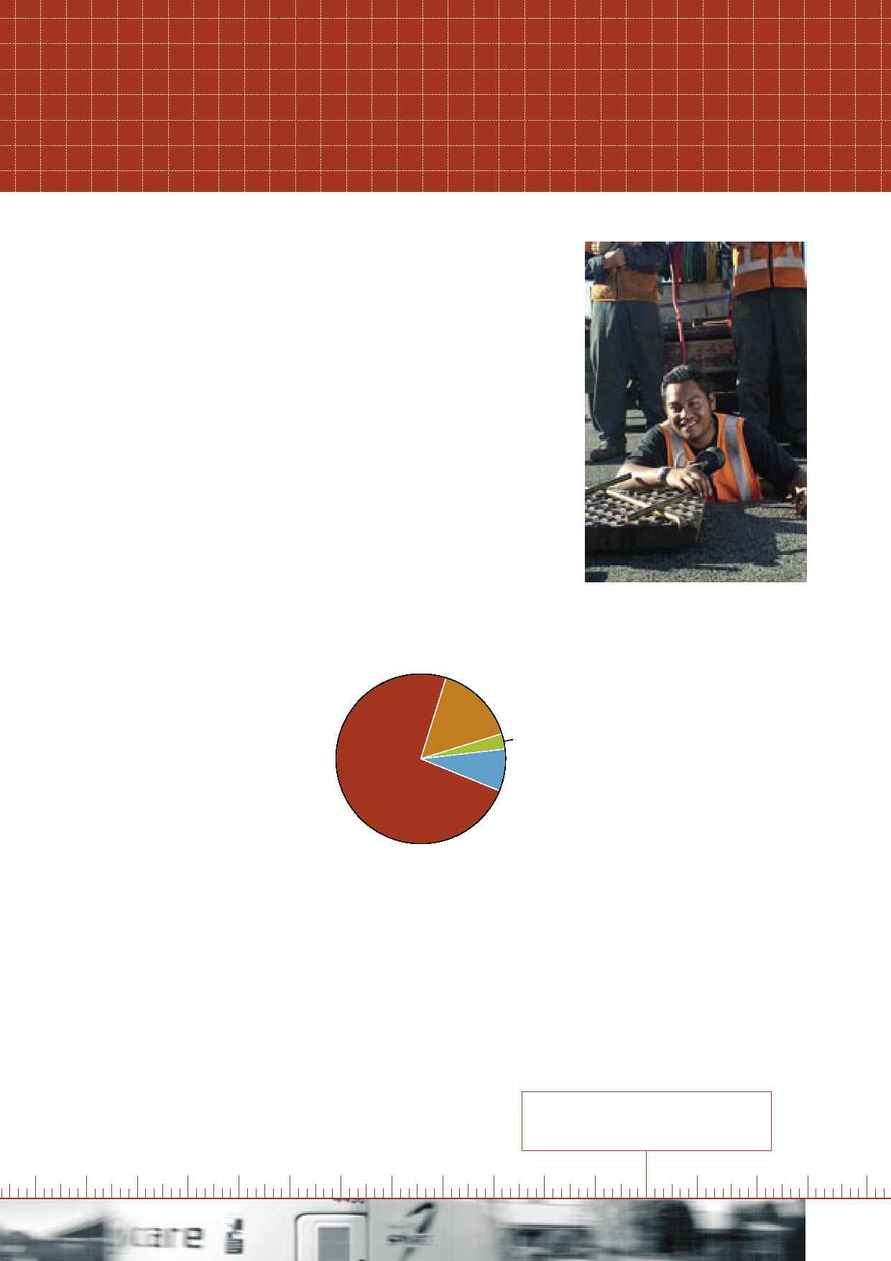
33
last two years, because we now
purchase electricity for Banks
Peninsula water and wastewater
treatment as part of our operating
contract.
Greenhouse gases
In the last year, through combustion
of diesel and petrol, City Care
created 5856 tonne of CO
2
emissions
Note d
(prior year 5620 tonne). In
eco-efficiency terms this shows a
reduction from 107.1 to 93.5 tonne
CO
2
/$M revenue.
City Care's total operational CO
2
is
equivalent to that consumed by 1064
hectares of native forest
Note f
.
In the positive, around 40,000 tonne
of green waste is diverted from landfill
in Christchurch each year. If this
material were left to decay a potent
greenhouse gas methane would
be produced. City Care prevents this
methane production by converting
the material to compost.
During the year, City Care purchased
an emissions tester to routinely
evaluate exhaust pollutants from
our Canterbury vehicle fleet. Results
from tests are now used to advise
mechanics on better engine tuning to
reduce this pollution.
Solid waste
The significant majority of the 58,900
tonne of waste produced by City
Care in the last year was the 43,700
tonne of clean fill generated from
construction activities. This is used
to rehabilitate existing quarries. 9,100
tonne of clean material was also
supplied to the Burwood Landfill
as cover.
Of the balance of around 6000 tonne,
1400 tonne was green waste sent
to our composting plant, and the
remaining 4600 tonne is mixed waste
that goes to landfill.
City Care has begun stockpiling
some asphalt rich waste to test the
viability of reusing this resource.
JUN-04: Christchurch City Holdings Ltd agrees to
invest another $2.5 million in City Care to support
projected growth.
WASTE PRODUCED (TONNE)
Hardfill
Cover Material
Green
Mixed
43,734
43,734
9,129
4,644
1,411
Hohepa Witana, Pre-apprentice 2004
